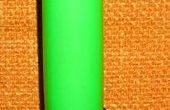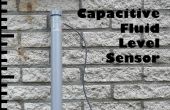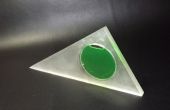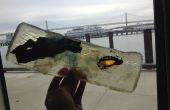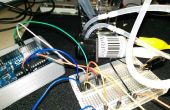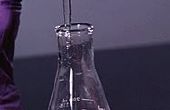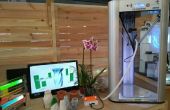Paso 2: Cargar el software
Cargar el software en el arduino antes de hacer cualquier cosa. Por favor observe que el código siguiente utiliza una ethernet shield y solicitud HTTP para responder a un cliente (navegador). Así, en el siguiente paso veremos que el servidor responde con una petición HTTP como escrito debajo. Si quieres por alguna razón usar un escudo de Wi-Fi o cualquier otra cosa puede que necesite modificar el código.
El valor (entero) que el usuario obtiene es simplemente lo que el sensor detecta. Por lo tanto, realmente no el nivel de líquido. PERO simplemente puede calcular el nivel si Resumen del tanque lleno el líquido hipotético según el valor que usted acaba de conseguir. Ecuaciones matemáticas simples.
/***************************************************************************** An idea for Future Smart Homes Oil Monitoring is a project that lets you monitor the ammount of oil at yourhome. Alerts you with a message on facebook, gmail or even SMS at your personal phone and more important gives you statistics about the past. * Arduino Uno * Ethernet shield and ethernet cable | Wireless shield * UltraSonic Distance Sensor * Wires for arduino pins Developed by Tzivaras Vasilis Last Update: [10-06-2015] *****************************************************************************/ #define echoPin 7 #define trigPin 8 #include <SPI.h> #include <Ethernet.h> // UltraSonic sensor min and max value to be accepted. int maximumRange = 200; int minimumRange = 0; long duration, distance; // Enter a MAC address and IP address for your controller below. // The IP address will be dependent on your local network: byte mac[] = { 0xDE, 0xAD, 0xBE, 0xEF, 0xFE, 0xED }; IPAddress ip(192, 168, 1, 177); // Initialize the Ethernet server library // with the IP address and port you want to use // (port 80 is default for HTTP): EthernetServer server(80); void setup() { pinMode(trigPin, OUTPUT); pinMode(echoPin, INPUT); // Open serial communications and wait for port to open: Serial.begin(9600); // start the Ethernet connection and the server: Ethernet.begin(mac, ip); server.begin(); Serial.print("server is at "); Serial.println(Ethernet.localIP()); } void getSensorValue() { digitalWrite(trigPin, LOW); delayMicroseconds(2); digitalWrite(trigPin, HIGH); delayMicroseconds(10); digitalWrite(trigPin, LOW); duration = pulseIn(echoPin, HIGH); //Calculate the distance (in cm) based on the speed of sound. distance = duration/58.2; } void loop() { // listen for incoming clients EthernetClient client = server.available(); if (client) { Serial.println("new client"); // an http request ends with a blank line boolean currentLineIsBlank = true; while (client.connected()) { if (client.available()) { char c = client.read(); Serial.write(c); // if you've gotten to the end of the line (received a newline // character) and the line is blank, the http request has ended, // so you can send a reply if (c == '\n' && currentLineIsBlank) { // send a standard http response header client.println("HTTP/1.1 200 OK"); client.println("Content-Type: text/html"); client.println("Connection: close"); // the connection will be closed after completion of the response client.println("Refresh: 5"); // refresh the page automatically every 5 sec client.println(); client.println("<!DOCTYPE HTML>"); client.println("<html>"); getSensorValue(); client.print("{\"id\":"); client.print("1770,"); client.print("\"measurement\":"); client.print(distance); client.print("}"); client.println("<br />"); client.println("</html>"); break; } if (c == '\n') { // you're starting a new line currentLineIsBlank = true; } else if (c != '\r') { // you've gotten a character on the current line currentLineIsBlank = false; } } } // give the web browser time to receive the data delay(1); // close the connection: client.stop(); Serial.println("client disconnected"); } }

